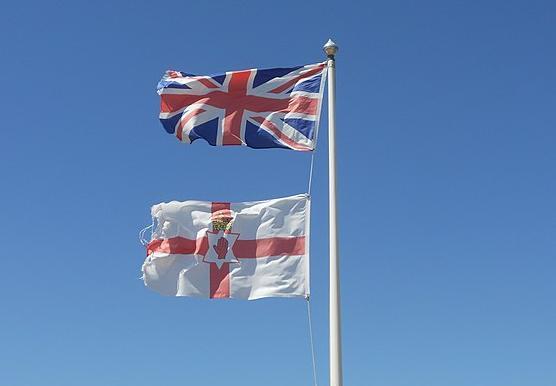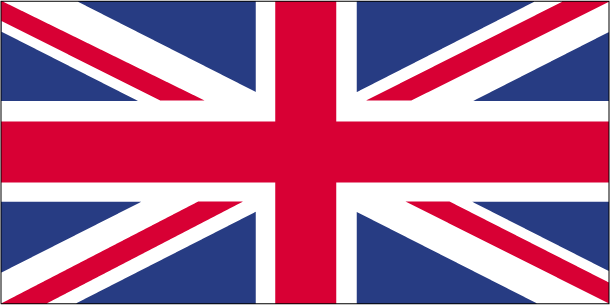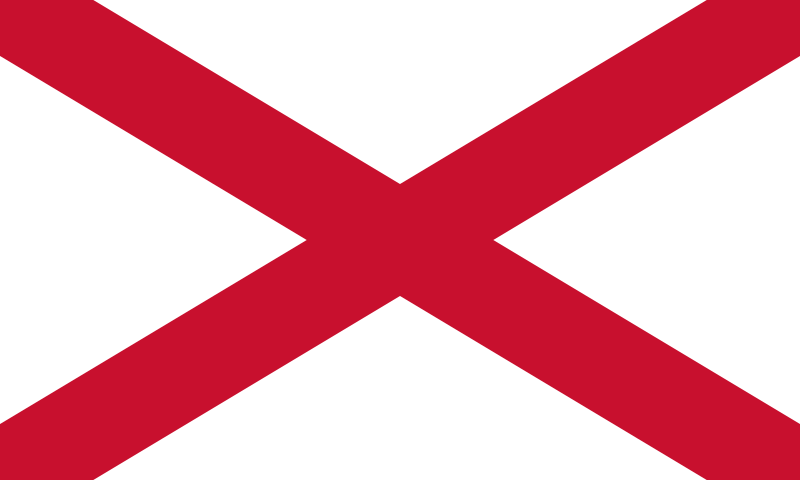Flags in Northern Ireland

In Northern Ireland, flags are a controversial issue. The BBC's phone-in discussion programme Talking Point once raised the question: "Should the flying of flags be controlled?" The backdrop was the numerous rows caused by flying the Union Jack in Northern Ireland. Study these responses:
"Our flag is NOT the tricolour - the tricolour belongs to a different country called EIRE! The flag of the UK, to which we belong, is the Union Jack, and long may it fly in pride over our land."
Stephen Brimstone, Northern Ireland
"Ireland has a flag; it is the cross of St. Patrick, a red diagonal cross on a white background. Since Patrick is the patron saint of both Northern Ireland, and the Irish Republic then it would seem appropriate to use that flag rather than either the Union Flag or the tricolour of the Republic."
John, UK
"Simple: Northern Ireland is in Great Britain; therefore, the Union Jack should be flying. If the nationalists don't like it, move to the South."
Graham, England
"The only flag that should be flown in Ireland is the Irish flag. For unionists and loyalists, this is one of their last stands. This is a manifestation of the dying gasps of the British Empire."
Ciaran Crowley, USA
Unlike Wales, Scotland, and England, there is no official local flag that represents only Northern Ireland. The only official flag is the Union flag, which is the flag of the United Kingdom. But this is not the only flag that is used: in Northern Ireland, people will associate with different flags depending on their political allegiance.

The Union Flag, commonly known as the Union Jack, is the only official flag in Northern Ireland. This flag is comprised of the flags of England, Scotland, and Northern Ireland. Whereas the red on white represents England's patron saint, St George, the white diagonal on blue represents Scotland's St Andrew, and the red diagonal on white symbolises the Irish patron saint, St Patrick. Apart from being the national flag signifying The United Kingdom of Great Britain and Northern Ireland, the Union Jack is historically associated with the vast British Empire, and it has retained an official status in some parts of the Commonwealth.

The national flag of the Republic of Ireland, Eire, is a tricolour consisting of green, white, and orange. In 1919, the tricolour was adopted as the national flag of the Irish Republic. However, when Ireland was divided into the Republic of Ireland and Northern Ireland in 1922, the northern part chose to remain in the union with the United Kingdom. As a result, the Union Jack became the official flag in Northern Ireland, to the disappointment of nationalists who would prefer to be a part of the Republic of Ireland. However, you will sometimes see the Irish flag used in Northern Ireland by unionist.
The colours in the flag all have a symbolic meaning. Green symbolises the Roman Catholics and the original inhabitants of Ireland. To explain the orange colour, we have to go back to the year 1690, when the Protestant king, William of Orange, defeated the Catholic king, James I, in the Battle of Boyne. After this, the English planted their people on the island to secure their interests, and the colour orange has since been associated with Protestantism. According to cultural traditions, white is commonly perceived as the colour of innocence, peace, and neutrality. The white in the middle of the flag carries connotations of a truce between the opposing green and orange.

In 1953, the Ulster Banner was adopted as the official flag of Northern Ireland, but in 1973, it ceased to have any official standing. However, the flag is still unofficially known as the flag of Northern Ireland. Today, it is seen as a staunchly loyalist flag because of the crown, the Star of David, and the Red Hand of Ulster, which are all symbols associated with the United Kingdom. It is today used to represent Northern Ireland in some sporting competitions, such as the Commonwealth Games and the PGA golfing tour, and it is used by FIFA to represent the Northern Irish national football team.

Yet another flag that is used in Northern Ireland is the Saint Patrick's Saltire. This flag has a red x-shaped cross on a white field, and is used to represent Saint Patrick, the patron saint of Ireland. We can find the saltire in the Union Jack, where it represents Northern Ireland. The flag is sometimes used as an alternative flag of Northern Ireland, and it is seen as less controversial than other flags used in the province. In fact, it has been suggested that the cross of Saint Patrick should be adopted as a common flag for all communities representing Northern Ireland.
Tasks and Activities
Comprehension
These are the answers. Make the questions.
- No, it is the Union Jack that is Northern Ireland's national flag.
- It is the flag representing the Republic of Ireland.
- The colour is associated with the original inhabitants of Ireland.
- It is associated with the Battle of Boyne and William of Orange.
- Because Northern Ireland is a divided community.
- It is comprised of flags from three countries.
It is in the middle because it symbolises peace between the opponents.
It is used to represent Northern Ireland during some sporting competitions.
No, it is mostly used by loyalists.
He was the patron saint of Ireland.
This is because it is regarded as less controversial than the other flags used in Northern Ireland.
Discussion
Discuss the quotations provided from the BBC's phone-in discussion programme "Talking Point". What is implied in the various statements?
Why do flags stir emotions?
How can flags create conflicts? How can flags create unity?
Make a timeline
Work in groups
Find out more about the following events in Irish history. Place them in the correct order and write down at least five facts about each.
Bloody Sunday
penal laws
hunger Strikes
Good Friday Agreement
the Potato Famine
the Civil War
the Battle of Boyne
the start of the Troubles
Act of Union
the Easter Rising
creation of the Republic of Ireland